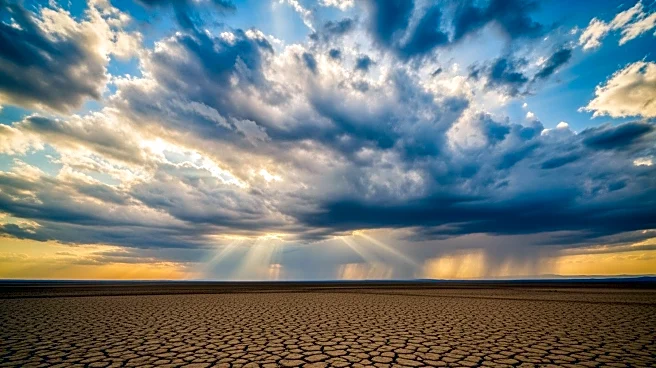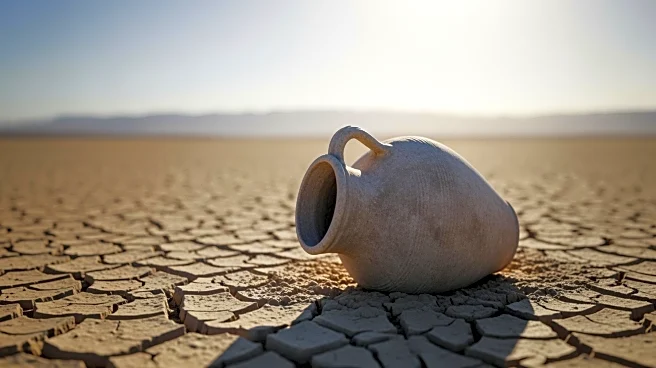What's Happening?
Iran has begun cloud seeding operations to induce rainfall amid its worst drought in decades. The technique involves spraying clouds with chemicals to encourage rain formation, targeting areas like the
Urmia lake basin. With rainfall at record lows and reservoirs nearly empty, officials warn of potential water rationing and evacuations in Tehran if conditions do not improve. The initiative aims to address critical water shortages affecting agriculture and urban areas.
Why It's Important?
Iran's use of cloud seeding highlights the severe impact of climate change on water resources in the Middle East. As drought conditions threaten water supply and agricultural productivity, the country faces significant challenges in managing its natural resources. The situation underscores the need for innovative solutions and international cooperation to address climate-related water scarcity, which could have broader implications for regional stability and food security.
What's Next?
Further cloud seeding operations are planned in east and west Azerbaijan to mitigate drought effects. Authorities are monitoring water levels closely, with potential measures including water rationing and population relocations if rainfall does not increase. The initiative may prompt other countries facing similar challenges to explore cloud seeding and other technologies as part of their climate adaptation strategies.
Beyond the Headlines
The reliance on cloud seeding raises questions about the long-term sustainability and environmental impact of such interventions. While it offers a temporary solution to water shortages, it does not address the root causes of climate change driving drought conditions. The situation calls for comprehensive strategies that integrate technological innovation with efforts to reduce greenhouse gas emissions and enhance water conservation.












